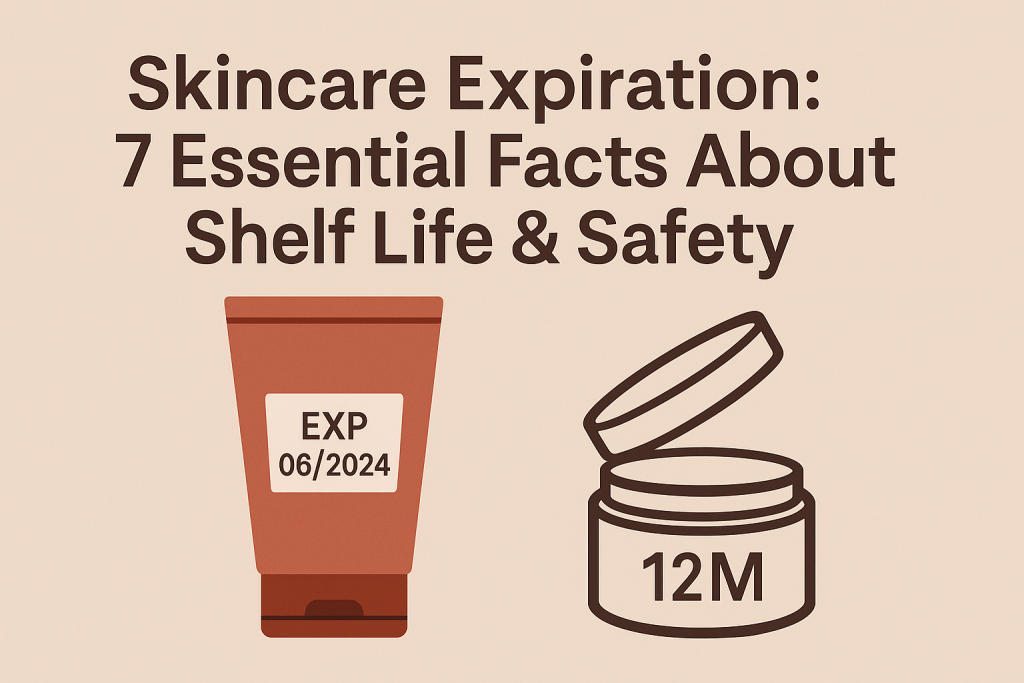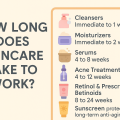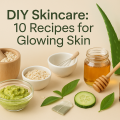Understanding Skincare Expiration Dates: What You Need to Know
Most people invest in skincare products hoping to achieve healthier, more radiant skin. However, many overlook the importance of expiration dates on these products. Knowing how long you can use skincare after its expiration date is crucial for maintaining not just the effectiveness, but also the safety of your routine.
Unlike food, expired skincare doesn’t always show obvious signs of spoilage. Still, using these products past their prime can compromise your results and even harm your skin. This guide covers the essential facts about skincare expiration, so you can make informed choices and keep your skin protected.
1. What Does a Skincare Expiration Date Really Mean?
Definition and Types of Expiration Dates
There are two main ways skincare products indicate shelf life: a fixed expiration date (e.g., “EXP 06/2024”) and a Period After Opening (PAO) symbol, usually shown as an open jar icon with a number (like “12M” for 12 months after opening). Both are important, but they serve different purposes:
- Expiration Date: Indicates the last date the unopened product is guaranteed to remain stable and effective.
- Period After Opening (PAO): Refers to the timeframe in which the product remains safe and effective after it’s first used.
Always check packaging carefully for these indicators. If you can’t find any, a good rule of thumb is that most skincare products are safe for 6-24 months after opening, depending on the type and ingredients.
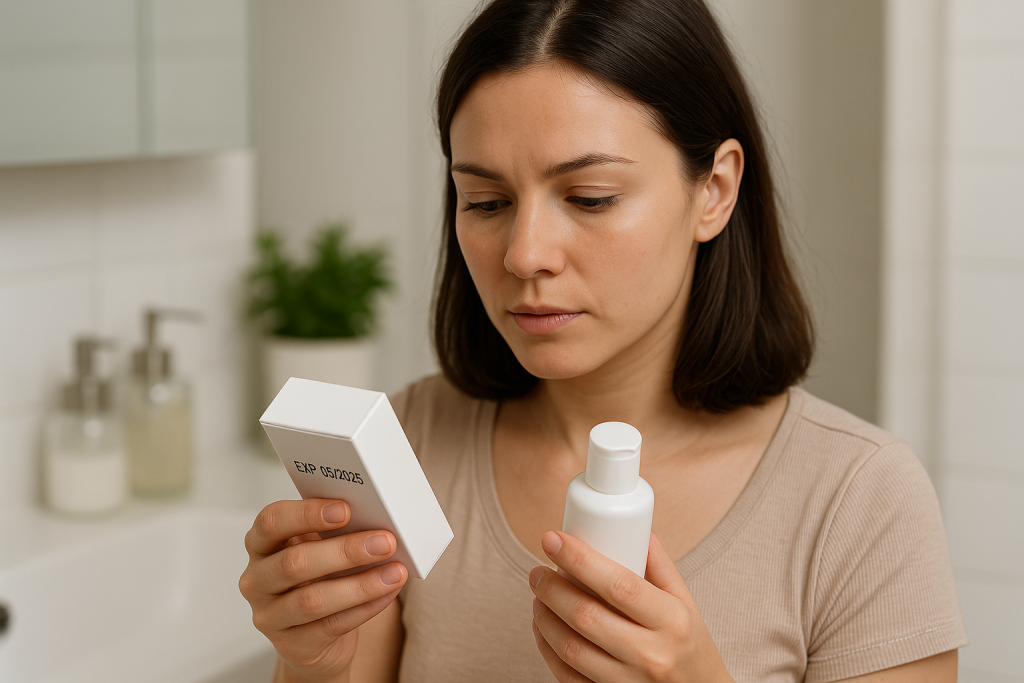
2. Can You Use Skincare After the Expiration Date?
The Short Answer
You shouldn’t use skincare products after their expiration date. The date is set based on tests for stability, safety, and effectiveness. After this point, the product’s ingredients may degrade, making them less effective—or even risky—to use.
Grace Periods: Are They Safe?
While some products may seem fine right after expiration, dermatologists advise against extended use. You might get away with a few days or weeks, but the risks grow over time. Factors like storage conditions, packaging, and ingredient type all play a role in how quickly a product spoils after expiration.

3. What Happens When You Use Expired Skincare?
- Ineffectiveness: Active ingredients, like vitamin C or retinol, lose potency after expiration, meaning your product may no longer deliver results.
- Changes in Texture and Smell: Expired products may develop odd odors, separate, or change color.
- Potential Skin Reactions: Using expired products can cause redness, irritation, breakouts, and even infections, especially for those with sensitive skin.
- Bacterial Growth: Preservatives degrade over time, allowing harmful bacteria or mold to contaminate the product. This risk is especially high for products stored in jars, where fingers are repeatedly dipped in.
In summary, expired skincare can range from harmless to hazardous—and it’s rarely worth the risk.
4. How Long Can You Actually Use Skincare After Expiration?
General Guidelines by Product Type
- Creams and Moisturizers: Usually stable up to 6-12 months after the PAO if stored well, but avoid using past expiration.
- Serums (especially with actives like Vitamin C): These degrade quickly and should be discarded promptly after expiration.
- Sunscreen: Never use expired sunscreen—the active ingredients break down and won’t provide protection.
- Masks and Peels: Toss after expiration, especially if they contain natural extracts or acids.
- Oils: May become rancid after the expiration date. Check the smell and texture, but it’s best to dispose of them.
- Cleansers: Less risky, but can lose effectiveness and texture post-expiration.
Risk Factors That Decrease Shelf Life
- Exposure to heat, light, and air
- Contamination from fingers or unclean applicators
- Storing in humid environments like bathrooms
Even unopened products often have a maximum shelf life of 2-3 years. If a product smells off, changes color, or its consistency alters, err on the side of safety and discard it, even if it’s before the stated expiration date.
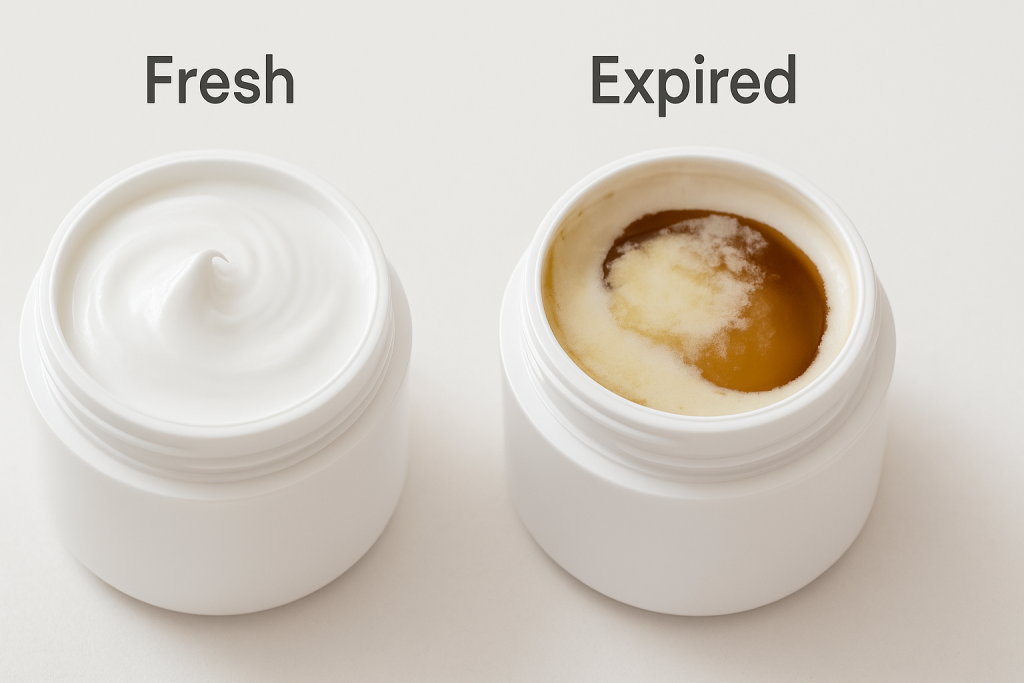
5. How to Check If Your Skincare Has Expired
Look for Visible Signs
- Separation or clumping
- Color changes or darkening
- Unusual or foul odors
- Change in consistency (e.g., becoming watery or grainy)
- Mold or fuzzy growth
Tips for Tracking Expiry
- Mark the opening date on the product label with a marker.
- Keep a skincare log or spreadsheet for frequently used items.
- Organize products by date of opening or expiration on your shelf.
When in doubt, it’s better to be safe and toss any questionable items.
6. Expert Tips to Extend Your Skincare’s Shelf Life
Proper Storage Makes a Difference
- Store products in a cool, dry place away from direct sunlight.
- Avoid humid areas—keep skincare out of the bathroom if possible.
- Keep lids tightly closed and avoid touching products with fingers. Use clean spatulas or pumps.
Avoid Cross-Contamination
- Do not share open skincare products.
- Always wash hands before application.
- Clean applicators regularly.
Following these tips helps you get the most from your skincare investments and minimizes waste.
7. Safe Disposal of Expired Skincare Products
Eco-Friendly Disposal Methods
- Empty the product and rinse containers before recycling.
- Check for local hazardous waste drop-off programs for chemical-containing products (like some sunscreens).
- Never pour leftover skincare down the drain; dispose in household trash if unsure.
Reducing Future Waste
- Purchase smaller sizes if you don’t use products quickly.
- Resist impulse buying and stick to essentials you’ll use regularly.
- Join product recycling programs from brands or local stores.
Proper disposal and mindful purchasing help protect both your skin and the environment.
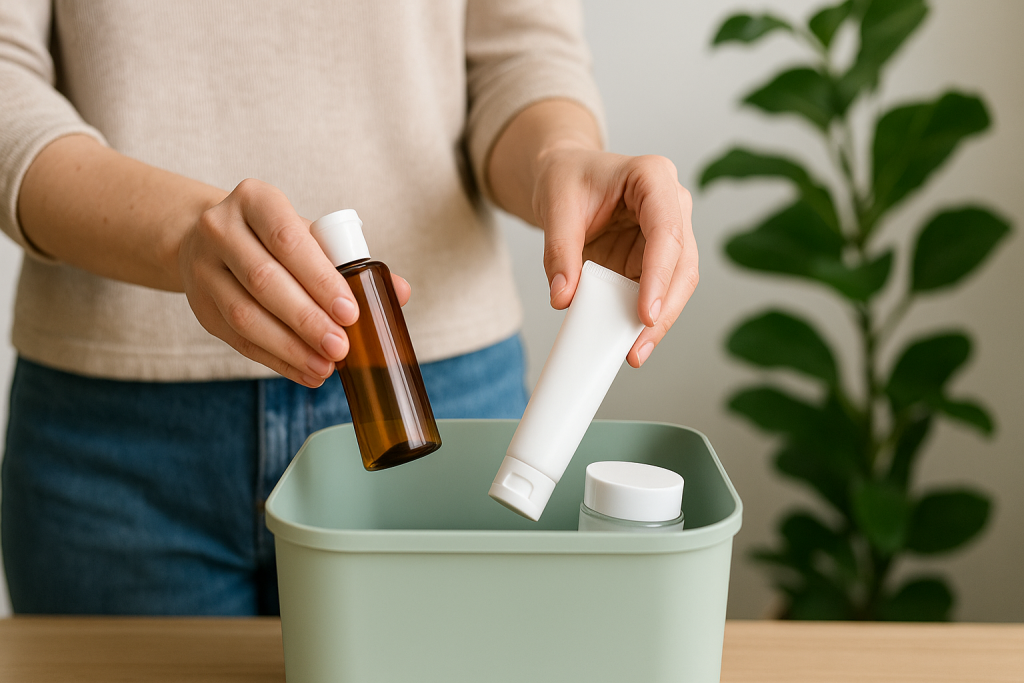
Frequently Asked Questions About Skincare Expiration
Is it ever safe to use skincare shortly after expiration?
While some products may seem unchanged a week or two beyond expiration, it’s not recommended by dermatologists. The risk of irritation or bacterial growth increases with time. For sensitive skin or products containing active ingredients, never use them past expiration.
Do preservatives guarantee safety after expiration?
No, preservatives can break down and become ineffective. Microbial contamination is still a risk, impacting both safety and product performance.
How do natural and organic skincare products differ?
Natural and organic formulas typically have a shorter shelf life because they contain fewer synthetic preservatives. Use these up quickly and store them carefully to maximize their safe use period.
The Bottom Line: Protect Your Skin by Respecting Expiration Dates
Skincare expiration isn’t just a marketing gimmick—it’s a crucial part of keeping your regimen safe and effective. Always pay attention to expiration dates and look for signs of spoilage before each use. When in doubt, replace old products and prioritize your skin’s health over saving a few dollars.
- Don’t use skincare after expiration to avoid ineffective results and potential skin problems.
- Follow expert storage tips to extend shelf life.
- Dispose of expired products responsibly.
By staying informed about skincare expiration, you can enjoy glowing, healthy skin—without the risks of expired formulas.
